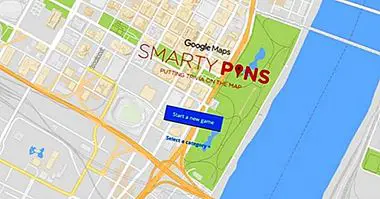6 consequences of pollution on health and society
All humans share everything on Earth with all living beings on the planet. In this way, no matter how far a living being from the other is, what impacts negatively on the planet potentially affects each and every species.
It is obvious that there are consequences of pollution on health and society . Pollution in our environment is one of the agents that are negative for the ecosystems in which we live, having a significant impact on the lives of people and all living beings.
- Related article: "Psychology and Nutrition: the importance of emotional feeding"
Main consequences of pollution for health and society
Pollution is one of the main concerns of the world for its contribution to the destruction of the world as we have known it. In addition, it has a serious impact on human health and the environment.
Most people think of water pipes from industrial waste, oil spills or toxic waste containers left in the environment. Even so, the sources of contamination are generally more subtle and the most dangerous pollution.
When we live in an environment without pollution we have a better quality of life. There are different types of pollution, if air and water pollution stand out from all of them. Next we will see what are the main consequences of pollution on health and society.
1. Water poisoning
In addition to industrial waste and motorized vehicles , there are other sources of pollution closer to our activity than we think. Fertilizers used in our gardens, oil discarded by the sink or used batteries without recycling are an example of this.
During heavy rains, all the material can seep into the subsoil with water, and can poison the ecosystems in which we live, affecting plants and animals. For example, water pollution ends up affecting marine life, which is one of our food sources.
The breeding of farm animals also involves many problems for the subsoil because of the waste of these animals. These can provide products derived from nitrogen or phosphorus, while at the same time cations such as potassium or magnesium that are fixed in the subsoil and contaminate it, harming other species in the environment.
Bacteria, viruses and parasites are also biological agents that can contaminate the water that is used for human consumption. Pathogens can come from human or animal faecal material due to inadequate water treatment.
- Maybe you're interested: "The 6 types of ecosystems: the different habitats we find on Earth"
2. Harmful food
Although they have not been intentionally added, natural contaminants or chemical substances can be found in foods. If the presence is mainly due to the result of several stages of production, processing or transport, as well as environmental pollution.
Due to environmental pollution, some heavy metals can be part of our food . Their effects depend on the concentration in which they are found and is due to their presence naturally or due to pollution from polluting sources such as the motors of motor vehicles.
Arsenic, mercury, lead, cadmium and aluminum are the main causes of environmental contamination in food naturally, but they are joined by other metals or the same from global industrialization.
3. Large pollution in cities
The consequences of pollution affect the whole population by health issues and also at the society level, being the people most directly affected those who live in large cities . Cough and sibilants are common symptoms that are observed in the people of the city.
It is estimated that 7 million people die every year in the world due to pathologies related to air pollution. In urban areas with a high concentration of population is where there is more pollution, Product of transportation means, industry, heating systems , etc.
In a city there is the emission of large amounts of gases that are harmful to our health. Scientifically, a very close relationship has been found between poor air quality in large cities and the increasing rate of disease. Highlights cardiovascular and respiratory diseases, as well as other organic complications, cancer, and low birth weight and complications in fetal growth.
4. Injury with physical exercise
Having contaminated air is a cause for concern even if we want to take care of ourselves by doing physical exercise. When it comes to physical activity is always better to do away from the pockets of air pollution. If we do not do it like that we can suck up many harmful particles , and that is that before the great demands of oxygen of our body we need more breaths per minute.
In this way, more contaminants can reach our respiratory tract, where they can remain thereafter.
If there is no possibility of going to sport outside the city, it is better to select the zones and hours with the least pollution index. For example, the first hours of the morning are more suitable for exercise, because during the night there has been no traffic. There are also people who wear masks with special filters , which allows them to perform the exercise where they want.
5. Disease development
Exposure to toxic substances, either short or long term, It has a toxicological impact on living beings, and obviously this includes us as humans .
Air pollution is one of the main types of pollution. Diseases such as asthma, lung cancer, ventricular hypertrophy, autism, retinopathy or degenerative diseases such as Alzheimer's and Parkinson's have a higher incidence and progression if the person is exposed to this type of contamination. It also damages the immune system and the endocrine and reproductive systems.
On the other hand, water contaminated by chemicals can also cause hormonal and reproductive problems, damage to the nervous system, liver and kidney damage and cancer. Being exposed to water contaminated with substances such as mercury can lead to Parkinson's disease, Alzheimer's, heart disease and even death in very high concentrations.
6. Extinction of species
Pollution destroys ecosystems and causes trophic chains to be destabilized, leading to extinction of all kinds of life forms.
Bibliographic references:
- Díaz-Fierros Tabernero, F., Díaz-Fierros Viqueira, F. and Peña Castiñeira, F.J. (2000) Problems and perspectives of environmental health. Bioethics Notebooks, 9 (42), 169-176.
- Ferrer A, Nogué S, Vargas F. and Castillo O. (2000). Toxicovigilance: a useful tool for public health. Med Clin, 115, 238.
- Smith, K.R., Corvalan, C.F., Kjellstrom, T. (1999). How much global ill health is attributable to environmental factors? Epidemiology 10 (5), 573-84.
- Weiland, S.K., Husing, A., Strachan, D.P., Rzehak, P. and Pearce, N. (2004). Climate and the prevalence of symptoms of asthma, allergic rhinitis, and atopic eczema in children. Occup Environ Med, 61 (7), 609-615.



















